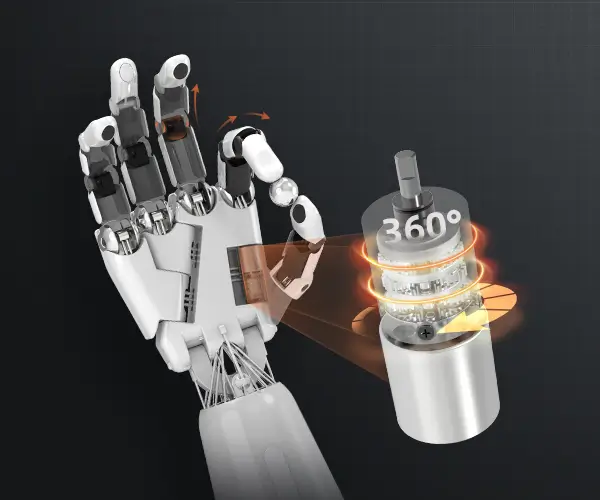When you’re working in robotics, one term you’re going to hear often is "joint variables." These little guys play a crucial role in the movement and functionality of robotic arms, hands, or even autonomous vehicles. But what exactly does this mean, and why should you care? Let’s dive in.

Joint variables are essentially the parameters that define the position of each joint in a robotic system. Think of them as the “coordinates” for the robot’s limbs, helping it know where to go, when to move, and how to execute each task with precision. Whether it’s a factory arm assembling parts or a robot performing delicate surgeries, joint variables make sure everything moves in harmony.
Why Are Joint Variables Important?
Imagine trying to move a robotic arm without knowing exactly where each joint is. It would be like trying to drive a car without seeing the road. The arm would end up all over the place, making the task impossible.
Now, the tricky part: there are different types of joint variables. Some deal with the position of each joint, while others focus on the speed or force at which each joint moves. It’s not just about getting from point A to point B; it’s about doing it smoothly and efficiently, without overshooting or wasting energy.
This level of control is essential in fields where precision is key, like medical robotics. Think about a robotic surgeon using a system that relies on joint variables to carry out complex, tiny movements during a procedure. Without precise joint control, the results could be disastrous. This is why these variables are fundamental in creating systems that are both functional and reliable.
How Do Joint Variables Work?
In a robotic arm, each joint has a specific degree of freedom (DOF), which is essentially the range of motion it can achieve. The more DOF a robot has, the more precise and flexible it can be. By adjusting the joint variables for each of these degrees of freedom, robots can perform a wide variety of tasks.
For instance, let’s say you're programming a robot to pick up a delicate glass object. The robot needs to not only position its joints in the right spots but also move them with just the right amount of force. It can’t grab too tightly or too loosely. By manipulating joint variables, the robot’s controller can fine-tune the exact movement, ensuring the glass doesn’t break.
The Big Picture: What Do These Variables Affect?
When you get down to it, joint variables are the heart of a robot’s accuracy and versatility. It’s not just about how far the robot’s arm moves, but also how well it can adjust to unexpected changes. If a part is off by a few millimeters or a machine hiccups during a task, joint variables help the robot compensate, maintaining its function without a hitch.
One of the key reasons why companies prefer advanced robotic systems is their ability to replicate tasks with incredible precision. Joint variables are at the core of this replication. The better you understand and control these variables, the more capable your robotic system becomes.
The Future of Robotics and Joint Variables
Looking ahead, joint variables will only become more sophisticated. As robotics advances, these variables will allow robots to interact with the world in even more nuanced ways. Whether it’s more agile drones, next-gen prosthetics, or smart manufacturing systems, the flexibility and control offered by joint variables are pushing the boundaries of what’s possible in the robotics industry.
To put it simply, joint variables may seem like a small part of the puzzle, but without them, a robot couldn’t function properly. They’re the unsung heroes of robotics, making sure every movement is precise, efficient, and purposeful.
In the world of robotics, getting these small but significant details right can make all the difference. And at KPOWER, we’re here to ensure that you have the tools and expertise to get those details just right.
Leveraging innovations in modular drive technology, Kpower integrates high-performance motors, precision reducers, and multi-protocol control systems to provide efficient and customized smart drive system solutions.




































